Historically Speaking





Over the last two decades, partnerships have become increasingly important in Historic Columbia’s work whether engaging in preservation advocacy efforts with our historic neighborhood associations or projectspecific collaborations like the Columbia City of Women with the Women’s Rights and Empowerment Network (WREN) harnessing resources with likeminded groups and individuals makes us stronger as a community. Over the last two years, several key partnerships have become even more valuable to Historic Columbia not only because they have allowed us to increase our footprint in new areas of research and public programs, but they have become key grant and earned revenue sources.
In June 2022, we entered into a contract with Able SC, a disability-led organization seeking transformational changes in systems, communities, and individuals that aims to make South Carolina a national model of equity and inclusion for all people with disabilities. In this partnership, we will research and document the lives of people with disabilities who resided at the former SC State Hospital. Funded by SC Humanities, this research project is allowing Director of Outreach and Engagement Katharine Allen to delve into the stories of men, women, and children who spent time on the Bull Street campus. Historic Columbia has long focused on the built history of this site, but the Able SC partnership has opened doors to a much more personal exploration of the people impacted by the conditions, treatments, and facilities. As a standalone project, this is groundbreaking and important work, but it also allows us to expand the content of tours we are offering in February at The Babcock.
For more than 15 years, Historic Columbia has advocated for the preservation of places and stories on the BullStreet District campus. It always has been apparent that the key to its development hinged on the successful rehabilitation of the iconic Babcock Building. Thanks to the investment and commitment of Clachan Properties, this transformation is upon us. For the second year, Historic Columbia members have the rare opportunity to see the rehabilitation of The Babcock in real time, thanks to the partnership with the Clachan team on this Behind-theScenes Tour.
As we recognize the benefits of our research, program, and funding partners, I also want to recognize the incredible support provided by the Historic Columbia membership. In the recently completed member survey, we learned that over 90% of you give to this organization because you align with our purpose and believe that as we fulfill our mission we make Columbia and Richland County better. That is as important to you as it is to us! Please know that we could not do this work without your annual support.
Happy 2023! Let’s work together to make this one for the history books.
WINTER 2023
Volume 63 |
President Kim Crafton
Issue 02
1st Vice President Doug Quackenbush
Treasurer Rodrick Shiver
Secretary Carroll Heyward
Historic Columbia preserves places and shares complex stories from the past that connect us in the present and inspire our future.

3 Preservation Update and Call for Award Entries
4 People Lived Here: Documenting the Lives of Those Treated at the South Carolina Lunatic Asylum
6 Why Join Historic Columbia? Membership has Meaning 8 Collections Spotlight
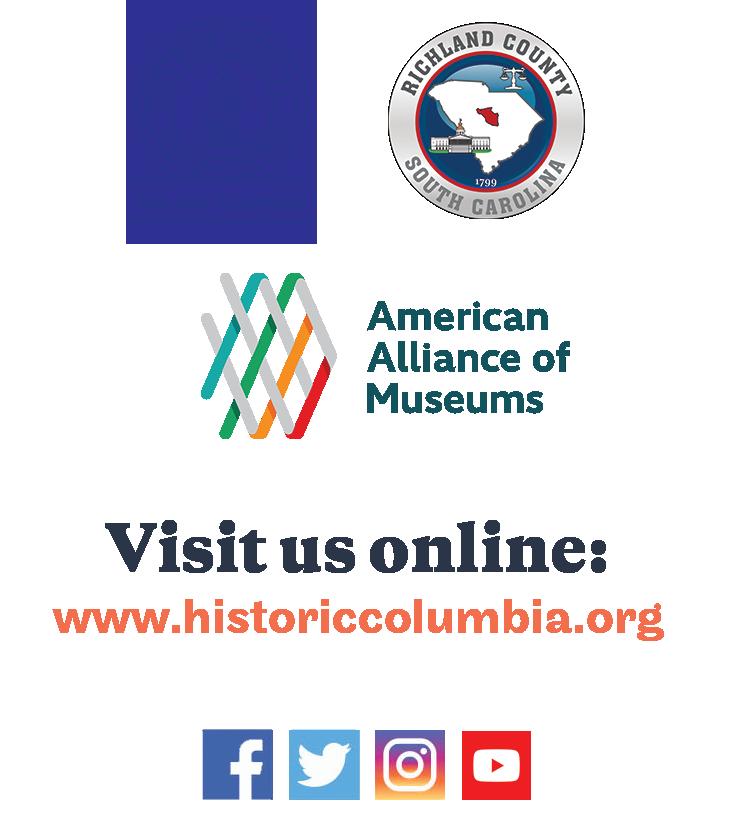
On the cover
Interior of an apartment currently being rehabilitated at The Babcock, previously home to the SC State Hospital. The apartment overlooks Segra Park. Image courtesy Historic Columbia collection
Robin Waites Executive Director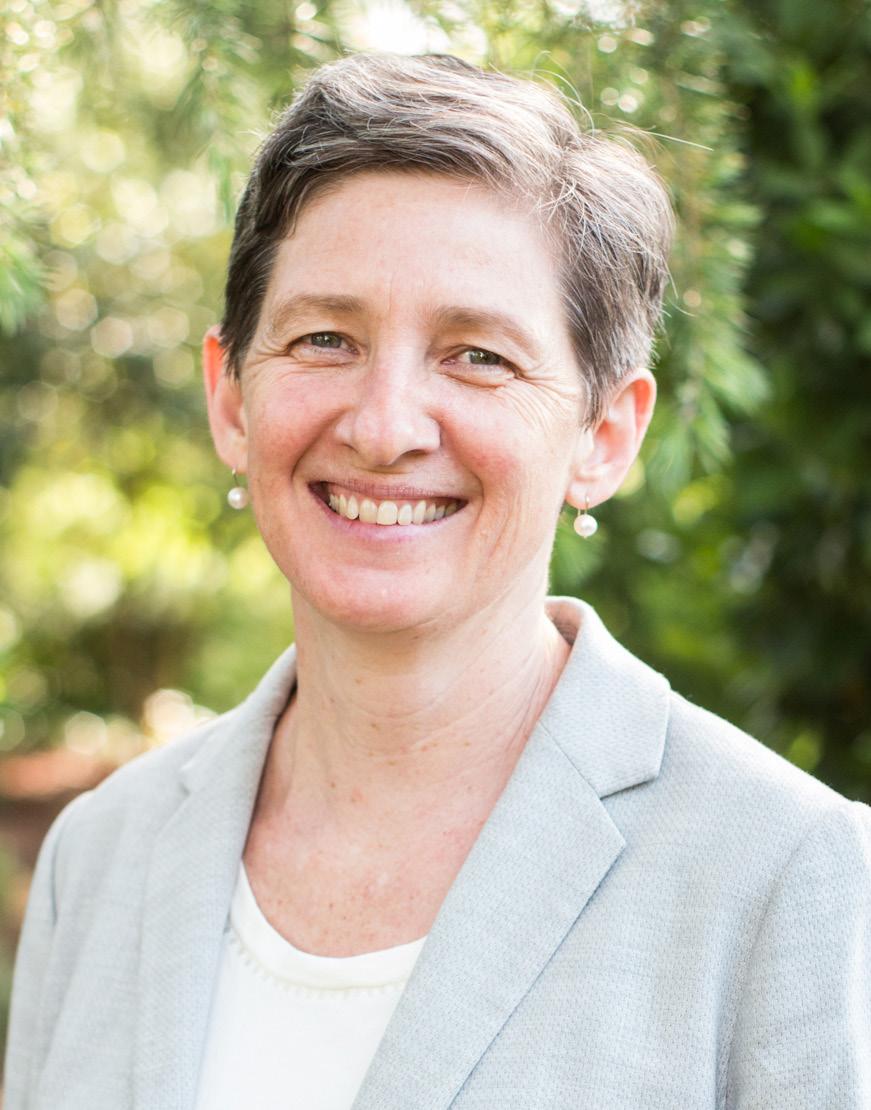
On Thursday, May 11, Historic Columbia will celebrate Preservation Month by recognizing local projects, individuals, and groups whose excellence in the field of historic preservation has maintained or added to the historical, architectural, and cultural heritage of Columbia and Richland County. Categories for recognition include:
As we welcome a new year of opportunities to improve the quality of lives in the capital city and unincorporated Richland County through historic preservation efforts, let’s take a moment to look back on just a few of the many achievements realized in 2022.

With its organizational restructuring, Historic Columbia established a preservation department tasked with serving as a preservation resource and as an advocate to increase communitywide commitment to historic preservation; managing a growing portfolio of historic preservation easements; ensuring that professional standards are met in the physical maintenance of properties under its direct care; and realizing
the potential of a revolving fund for the purchase and resale of historic properties.
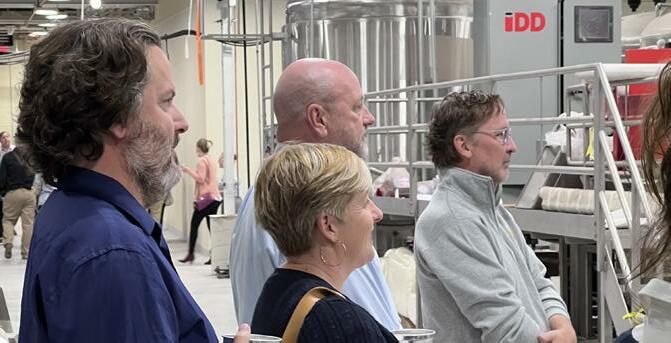
Historic Columbia received the Chairman’s Award from the Main Street District for the role it played in establishing the Columbia Historic Commercial District in 2014. This National Register of Historic Places listing has empowered developers who have leveraged tax credits in revitalizing three blocks on Main Street and aspects of Taylor and Sumter streets.
Renovation Rodeos and Behindthe-Scenes Tours granted Historic Columbia members access to historic private homes, businesses, and inventive adaptive use projects involving former institutional, industrial, commercial, and religious properties located within six downtown and historic suburbs.
t t
Preservation, Rehabilitation, or Restoration (commercial, institutional, rental, or municipal)
This award celebrates commercial, institutional, rental, or municipal projects that follow the National Park Service’s definitions of preservation, rehabilitation, or restoration.
Preservation, Rehabilitation, or Restoration (residential/ single family)
Historic Columbia’s Preservation, Rehabilitation or Restoration (Residential) award recognizes projects that follow the same, previously listed definitions, but applied to single-family homes.
tPreservation Leadership Nominations in this category recognize an individual, corporation, governmental agency, community, or neighborhood association that has significantly contributed to the advancement of historic preservation in the community.

Nominations for projects are limited to those completed within the past five years and located in Columbia and Richland County. Leadership awards have no time limit. Nominations must be received by March 6, 2023. Winners will be notified in early April. To submit a nomination, visit:
historiccolumbia.org/preservation-awards
 By KATHARINE ALLEN, Director of Outreach and Engagement
By KATHARINE ALLEN, Director of Outreach and Engagement
Harriet J. Gray, a 35-year-old woman, was a mother and wife of the builder of the original asylum building.
Angelina and Louisa Burrel, two women in their 30s, were sisters who immigrated from France.
Anthony, a 50-year-old man, was enslaved by Franklin J. Moses, Senior.
Samuel G. Able, a 10-year-old boy, was the son of a farmer who fought for the Confederacy.
John A. Newton, a 25-year-old man, became a sign painter like his father, and decades later, Sarah A. Newton, his mother, was a 72-year-old widow and homemaker.
These are just a few of the people committed by family, enslavers, doctors, and government officials to the South Carolina Lunatic Asylum during the 19th century. Although doctors and attendants treated them vastly different based on their race, gender, social class, and reason for commitment, each person eventually found themselves living in confinement and at the mercy of others who would decide whether they could, or should, ever return to society.
Some, including Harriet and the Burrel sisters, lived and died in the Mills Building at a time when the asylum comprised a single square block. Others, including John and Samuel, were among the first patients treated in the oldest sections of today’s Babcock Building, years before that sprawling facility was completed or renamed. And some, including Anthony, were allowed to live in neither place, instead finding themselves confined in makeshift, wooden structures, segregated and isolated from others on account of their race, status, or symptoms. Each of these people, and thousands more, had a life before being sent to Bull Street. Why then, do we not know more about who they were?

In past projects, Historic Columbia focused on documenting, preserving, and sharing the history of the buildings that once comprised the asylum, and later, those of the much-expanded state hospital. The Babcock and Mills buildings in particular stand as physical embodiments of one of the nation’s first state asylums, and their architecture reflects how the treatment of physical and mental disabilities changed over the course of the 19th and early 20th centuries.
However, this lens can and often has dehumanized and reduced the people treated here to statistics. For instance, between November 1850 and November 1851, the asylum received 55 new patients, for a total of 176 treated that year. Of these, 40 were deemed cured and nine died. Of the 127 remaining, 68 men lived in male wards that were at capacity, while 59 women occupied female wards that were almost full. This overcrowding would soon justify the construction of the new asylum building, known today as The Babcock. These dates and numbers provide some context but no connection to the people who defined the asylum—its patients.
Explore the past, present, and future of the former South Carolina Lunatic Asylum at Historic Columbia’s Behindthe-Scenes Tour of The Babcock. Participants will learn how historic uses have informed its current preservation and restoration. Thanks to our partner, Clachan Properties, participants will have an exclusive opportunity to walk through several sections of the rehabilitated building and learn about life at the site over the last 140 years. The tour will conclude with comments from Hughes Development Corporation about the future of the BullStreet District followed by beverages, courtesy of Peak Drift Brewing Co., and snacks.

historiccolumbia.org/the-babcock t
For example, among those 59 women was widow Mary P. Allston, born in 1784 and committed by her grandson, Theodore S. Gourdin, in 1848. As Gourdin debated taking this step, Mary’s cousin and future governor R.F.W. Allston wrote to him that “she would be surrounded by as much care and attention to her well being and considerate kindness....as in any place of the kind.” Gourdin must have agreed, and Mary found herself living in the Mills Building just 30 days later.

Almost three years later, family friend and future governor, Benjamin F. Perry mentioned Mary in a letter to his wife:
Friday morning I visited with fifteen or twenty Senators & members of the Legislature the Lunatic Asylum & passed through all the buildings, saw all of the inmates & walked over the grounds & garden & green house, all of which are interesting. I saw old Mrs. Alston. [sic] She looked comfortable & happy. In one room a sitting room or parlor I saw fifteen or twenty women, all neatly dressed & well behaved. No one would have supposed that they were crazy.
The scene painted by Perry, one of moral treatment, beautiful surrounds, and progress towards sanity, aligns with the asylum’s institutional reporting. Treatment records confirm that she had a private apartment, private nurse, and could request whatever food she wanted. While her standard of care, objectively, was much
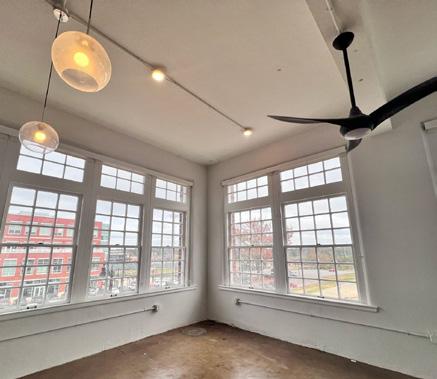


higher than most patients, Mary herself felt differently about her circumstances. In late 1848, she wrote to her three grandsons that, “My poor weak shattered Nerves are truly harrassed [sic] and tortured by being in a Madhouse or perfect Bedlam! [I] would now rather suffer the most excruciating death than be confined here.”
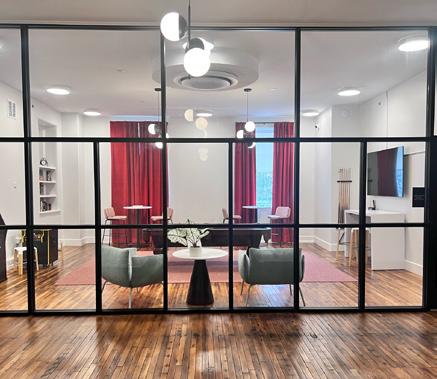
Mary’s experience at Bull Street is unique in that she could and did record her own thoughts on her confinement, and that this account has survived into the present. Thousands of other patients did not have this ability, and today all that remains are patient numbers, names, and sparse treatment notes. Now, in partnership with Able South Carolina, Historic Columbia has begun the task of finding out who these people were before and during their confinement, and ultimately
what happened to them. With support from South Carolina Humanities, we are collectively creating a series of biographies of people who would eventually become patients, including those mentioned at the beginning of this article. Our goal is to recenter individuals in the stories we share about Bull Street, and in doing so destigmatize disabilities of all kinds. The website will launch later this spring, so be sure to subscribe to Historic Columbia’s monthly newsletter for updates.
“Why did you join Historic Columbia?” If you ask the nearly 1,000 members of Historic Columbia (HC) that question, you may receive 999 different answers. Different aspects of HC’s mission resonate with different people—but one constant remains: HC membership is important because it connects us to each other, to our community, and to our shared history. In our recent member survey, 91% of respondents said they would
enthusiastically recommend membership to a friend. That high rating tells us we’re heading in the right direction. With other feedback received from the survey, we will design programs, tours, and events to appeal to more diverse, eclectic, and informed audiences, even as we continue to challenge ourselves to keep history relevant to all.
When you join HC, you become our partner in advocacy and education. Our members help us preserve places and share complex stories from the past that connect us in the present and inspire our future.
With our members, HC is able to harness the power of history to inspire curiosity and catalyze community engagement, and create educational and entertaining historical programming that pulls people together and builds strong bonds within our community.
To test our question theory, we asked six members to describe what their HC membership means to them. All answers are unique and meaningful, just like our members. After you read their stories, consider this...what does your HC membership mean to you?
The Soda City Certified app is all about exploring Columbia while supporting local businesses and nonprofits. A key part of exploration is HISTORY. The work that HC has done with preserving our historical sites while giving tours and behind-the-scenes looks at active transformations is exactly what the app represents. We support HC in several ways—we serve as a liaison that lists an interactive tab on the “Attractions” portion of the app, where our 15,000+ app users can learn about the sites and visit the Historic Columbia website to learn about tours. We also include special events on the “Events” portion of the app. My membership allows me to be the first to know about these events and share the information with our community!

After retirement, I knew I wanted and needed to find a use of my free time. A friend, who was working at HC, suggested that I attend the orientation programs for volunteering. At the end of the six-week orientation period and after exploring docent work, I felt my real worth was helping in the gardens and grounds. I have been happy to see the garden volunteers grow over the years, creating new friendships along the way. It has been wonderful to see the gardens grow and blossom in so many different ways. The garden staff has helped the volunteers feel important in our role at Historic Columbia and proud to be a part of a mission. I am so happy that I took the steps those years ago to be part of HC—as a volunteer AND a member!

HC membership is important to me because of the community partnerships the organization shares. I am a proud member of the steering committee for the Columbia City of Women, an initiative of HC and Women’s Rights Empowerment Network (WREN). This project recognizes the unsung “sheros” of our city, who throughout history have stepped forward and dared to push for positive, healthy change in society. Identifying women who broke through barriers is the mission of this project. Telling their story is a form of awareness for us all, that history can repeat itself and sometimes the barriers can be remade very easily. HC strives to make history relevant to all, and I’m proud to be a member of an organization with that goal.


Historic Columbia is a wonderful financial investment because it has such a profound impact on this community. By telling the complete story—how Columbia evolved, faced challenges, and overcame hurdles—HC helps us better understand today’s Columbia. I very much appreciate the work of the organization and am happy to support it both financially and with my time. I encourage all who have not joined HC to do so—you will not regret investing in the quality of life in our community!

In addition to being a member of HC, I work first-hand with guests as a historic house tour guide. There is nothing like engaging with kids who are excited to share what they have learned with the tour group! I find my colleagues are incredibly kind and interested in working together towards a common goal of sharing HC’s mission with the community. We work well cross-departmentally and find plenty of time to laugh together as well. As a Palladium member, I love attending special events that highlight HC’s mission with our local area and businesses. I believe that being a member enables me to speak truthfully when I say how much I enjoy my time at HC. I hope to see fellow members on a house tour soon!
When Robin Waites approached me to serve as a member of the Steering Committee of the LGBTQ Columbia History Initiative, I was happy to do so! True for all of us, I had many competing priorities since at that time I was serving as an interim associate dean for diversity in the USC Columbia of Arts & Sciences. But the breadth, vision, inclusivity, and history-making nature of the project made me not only jump at the chance to participate as a steering committee member but also contribute with an in-person interview with my experiences as a same-gender-loving (SGL) African American man. This initiative is not only a gem to South Carolina LGBTQ communities, but it really is a model for how to capture and foreground unrecognized but vital voices and contributions of queer communities globally. I was thrilled to be asked to join the HC Board of Trustees partly as a result of my service with this project. HC is an organization vital to the very identity of the city of Columbia because, true to its mission, HC brightly promotes the voices and stories of communities too often relegated to the shadows. I am proud to be a member, board member, and supporter of HC.

Feb. 19: The Green Book of South Carolina Book
Signing
4:00 — 5:00 p.m. | Boyd
Horticultural Center
Join us for a presentation and book signing of The Green Book of South Carolina: A Guide to African American Cultural Sites. Compiled by the WeGOJA Foundation (on behalf of the SC African American Heritage Commission), this is a first-of-its-kind travel guide to the most tourist-friendly destinations offering visitors avenues to discover intriguing African American history as they travel the state. The event is free and open to the public, and books will be for sale at the event.
March 23: Concert in the Gardens
6:00 — 8:00 p.m. | HamptonPreston Mansion & Gardens
Performers from the South Carolina Philharmonic will join Historic Columbia to present a beautiful concert of light classics in the garden. Please plan to arrive any time after 6 p.m. The concert will begin at 7 p.m. and last an hour. Bring your own blanket or chairs, and pack a picnic if you’d like. Tickets are required and space is limited. Please note that this event is for those 21 and over. Wine will be available to purchase for $5 per glass, but everyone can bring their own food and beverage.
April 16: Palladium Tour | Columbia Craftsman
1— 6:00 p.m. | Melrose Heights
The 4th Annual Palladium Tour will showcase houses embodying the early 20th-century architectural movement that rebelled against the excessive detailing of late Victorian period, instead opting for the natural beauty, colors, and textures of building materials and construction in the Craftsman style. Guests will tour six properties nestled within the Melrose Heights-FairviewOaklawn neighborhood, which celebrates its 20th anniversary as a local architectural conservation district and its 7th year as a National Register of Historic Places district in 2023. The tour will conclude with a block party where participants will enjoy the southern hospitality that defines much of our community.
What better way to celebrate the New Year than with a bottle of champagne! Also known as soda taps, champagne taps were used to penetrate the cork without opening the bottle, which allowed for a spout to be created for the liquid when the valve is opened. When the valve is closed, the bubbles of the gaseous liquid are preserved. This style of champagne tap, shaped like a bottle of champagne, was produced by the C.T. Williamson Co., Inc. of New Jersey from 1900 to 1946. It was the largest producer of corkscrews in North America in the 1920s. This corkscrew was sold by E.L. Wingfield Druggist at 1536 Main Street in Columbia. Emmet Lee Wingfield (1872-1936) worked with druggist W.C. Fisher before opening his own storefront at 1536 Main Street around 1901. Champagne corks like this may have been some of the first items sold in his store. While labeled as “Easily Cleaned,” it is unconfirmed as to whether this tap was ever used.
Historic Columbia Collection
2001.5.47A-B
 Champagne Tap with Box, c. 1901
Champagne Tap with Box, c. 1901